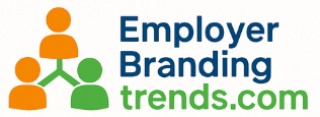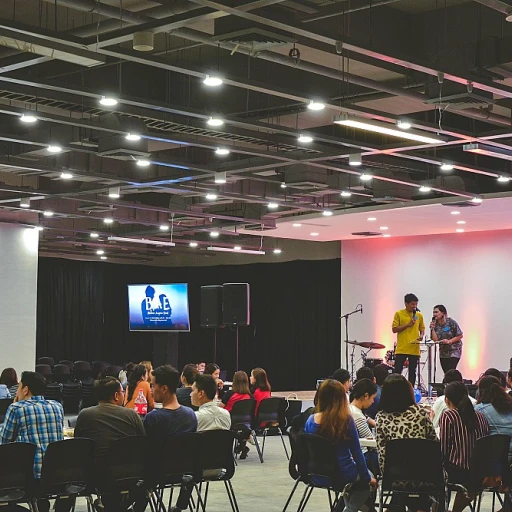
The Rise of Fun Workplaces
Evolution of Workplaces Toward Enjoyment
In recent years, the concept of a 'fun' workplace has become a distinctive trend, with many companies acknowledging its impact on employee satisfaction and retention. This shift is fueled by a combination of factors, wherein the average job is no longer just about receiving a paycheck but is crucial to one’s overall career journey. A "fun job" has emerged as an appealing prospect in the job search, particularly for Millennials and Gen Z, who prioritize work-life balance over high-paying jobs without the fun factor.
Today's best companies recognize that their workplace environments play a significant role in attracting the best talent. These environments not only need to be engaging but also offer a sense of community, allowing employees to form strong connections with their teams and managers. Social media has further amplified this trend, enabling companies to showcase their unique workplace cultures to a broader audience. It's no longer just about providing jobs that pay well or meet the national average salary; it’s about crafting an experience that employees view as a great place to work.
Moreover, the appeal of fun workplaces is multifaceted. Not only do they spice up the average workday with creative decor and recreational activities, but they also nurture innovation and collaboration. Video game zones, flexible hours, and team-building activities encourage a healthier work-life integration, making these environments sought-after in the modern job market. Thus, companies aiming to stay competitive must consider these evolving preferences as part of their brand strategy.
While fun environments indeed capture the interest of potential employees, some challenges remain. Balancing fun with productivity, and ensuring inclusivity in recreational offerings can be intricate hurdles. Delving deeper into these dynamics can help businesses create the best frameworks, avoiding potential pitfalls. For more insights into challenges such as handling a toxic work environment, you may explore additional resources like navigating the challenges.
Key Elements of a Fun Workplace
The Essential Components of a Vibrant Workplace
Creating a fun environment within a company entails more than adding a foosball table or hosting occasional happy hours. A genuinely engaging workplace that draws in top talent involves several core elements that blend work and play, while also respecting professional space. First and foremost, there's the physical environment. Offices designed with creativity in mind, employing open spaces, vibrant colors, and unique design elements, often rank highly in employee satisfaction. This thoughtful design can contribute to a fun atmosphere, encouraging collaboration and spontaneous creativity. In addition to the physical space, the social dynamics within the team play a crucial role. Team-building activities, casual Fridays, or themed dress-up days not only foster closer connections between colleagues but also promote an inclusive culture, crucial for diverse workforces in global companies today. Another key element is offering job roles and growth opportunities that spark excitement. High-paying jobs that provide room for career advancement motivate employees to put their best foot forward. Companies that align job descriptions with attractive annual salary packages and the national average tend to stand out in job searches. Offering roles that come with a sense of purpose or innovation, such as positions in technology or video game industries, can heighten the fun factor. Furthermore, a managerial approach that empowers autonomy can inspire job satisfaction. Managers who trust their teams help build a strong professional relationship foundation, resulting in a great place for employees to exercise creativity and grow. Flexibility in work-life balance arrangements, like remote work options and flexible hours, enhances overall employee well-being by acknowledging individual life balance needs. Investing in avenues that consistently improve employee experiences, such as strategic consulting, can significantly contribute to creating and maintaining a fun, yet productive environment. Interested readers seeking further insights on enhancing workplace strategies can explore more about enhancing employee experiences. Collectively, these elements form the backbone of a successful and fun work environment, driving engagement while respecting the professional commitments of the team.Impact on Employee Engagement
The Influence of Fun on Job Commitment
The concept of integrating fun into the workplace is gaining traction, and its impact on employee engagement is particularly compelling. Research indicates that fun can be a powerful tool in boosting job satisfaction and enhancing overall work experience. This approach is not just about offering high paying jobs or ensuring an average salary but creating a vibrant culture where employees genuinely enjoy coming to work. Fun workplaces often foster a sense of belonging and camaraderie among team members. This enhances collaboration and open communication, which are crucial for a healthy work environment. When people view their company as a great place to begin or advance their career, they are more likely to be motivated and stay committed. This reduces turnover rates, which can be beneficial in thinking about hiring costs and maintaining a consistent team dynamic. Moreover, companies that emphasize the fun factor can differentiate themselves in the job search market. In today’s competitive landscape, potential candidates often look beyond salary to assess a company's culture and environment. This means that fun jobs can attract top talent, especially among younger generations who place a high value on work life balance. Incorporating amusement into work settings can mean different things for different organizations. It could involve casual Fridays, team-building activities, or relaxed office spaces inspired by innovative wellness activities. Whatever form it takes, the aim is to create a space where employees can be productive while also feeling content and inspired. Yet, it's crucial to maintain a balance. While fun can boost morale, it should not overshadow the primary business objectives or become a distraction. Companies have to be strategic in implementing such elements, ensuring that the focus on a fun job environment compliments the organization's goals and employees' professional growth.Challenges in Implementing Fun Workplaces
Pitfalls and Obstacles in Creating Engaging Work Environments
The desire to integrate fun in the workplace reflects a grand vision. However, companies venturing into this exciting territory may face challenges that can disrupt the harmony of such ambitious endeavors. One of the primary challenges in cultivating a fun work environment is striking the right balance between fun and productivity. While a dynamic environment can stimulate creativity and foster teamwork, it may inadvertently lead to reduced focus if not properly managed. Managers must ensure that the "fun factor" complements, rather than detracts from, the company's objectives. Finding the appropriate metrics to gauge the success of these environments can also be daunting. While traditional measures such as average salary or median annual pay are relatively straightforward, assessing workplace happiness and engagement can be more subjective. Companies often rely on employee surveys and feedback to understand if fun jobs really contribute to a positive experience. Leadership plays a crucial role, as well. Senior managers need to be aligned with the company’s vision for a fun workplace to ensure it doesn’t spiral into chaos. Additionally, translating these ideals across various departments can also pose a challenge, as some jobs may not inherently offer the same degree of flexibility for fun. This is where creativity in job design becomes essential. The prevalence of social media has also changed how people view their jobs. As great places to work often become viral sensations online, companies must effectively manage their brand image to attract top talent. High paying jobs alone don’t define employee satisfaction anymore, and the expectation of enjoyable work environments is a fiercely competitive addition to modern job offerings. Furthermore, the company's culture must remain inclusive. Not every employee might view fun in the workplace positively. It is crucial for companies to be sensitive to different personalities and preferences, ensuring that well-meaning initiatives don’t alienate certain groups within their organization. Overall, while the implementation of a fun work environment can be rewarding, it is fraught with complexities that require nuanced strategies and persistent evaluation to ensure sustainable success. Companies carving out these engaging spaces must remain agile and open to feedback, continually refining their approach to maintain the desired harmony between fun and work.Case Studies of Successful Fun Workplaces
Success Stories of Fun-Focused Workspaces
Creating a vibrant and engaging work environment can significantly elevate an organization's appeal, fostering a positive reputation among job seekers. Let's explore a few case studies that exemplify how companies have successfully harnessed the fun factor to boost employee satisfaction and company performance. The tech industry often sets the benchmark when it comes to creating engaging workplaces. A renowned tech company has taken innovative steps by integrating game zones and relaxation areas into their office layout. This not only encourages teamwork but also provides employees with a refreshing break from routine tasks. The result? Enhanced creativity and collaboration across departments. Another example comes from a creative agency that prioritizes work-life balance through flexible hours and remote working options. This practice aligns with the expectations of average job seekers looking for jobs that promise more than just a competitive salary. The agency has gone beyond conventional perks, ensuring that its teams feel valued and motivated daily. Retail companies are also making waves by rethinking the traditional workplace model. A dynamic retail brand has increased its focus on community-building activities. Regular social events and recognition programs contribute significantly to making the company a great place to work. Employees often point to the social atmosphere as a top reason for their engagement and loyalty to the brand. These examples underscore that injecting elements of fun and innovation into the workplace can create a high-engagement culture. Companies that pay attention not only to salary structures but also to enriching the employee experience find themselves ranked among the best companies to work for nationally. The positive feedback loop generated by social media endorsements further emphasizes a company's reputation, drawing in talent eager for more than just high-paying jobs. Indeed, the shift towards a more fun-focused work culture is not merely a passing trend; it reflects an evolving view on how work environments contribute to job satisfaction and long-term career fulfillment. These case studies offer a glimpse into how forward-thinking companies can successfully blend fun with productivity, setting new standards in the employment landscape.Future Trends in Fun Work Environments
Looking Ahead: Fun Work Environments of Tomorrow
As companies continuously evolve to enhance their employer brand, the concept of fun work environments is set to expand and transform even further. The shift towards these engaging workplaces is driven by a growing demand from employees who seek not only a paycheck but a meaningful and enjoyable experience at work. Several key trends are emerging in this arena.
Firstly, the integration of technology will play a pivotal role in shaping the future of fun jobs. Virtual reality (VR) and augmented reality (AR) are increasingly being adopted by pioneering companies, allowing employees to immerse themselves in unique and stimulating work settings. These advancements hold the potential to significantly boost the fun factor while enabling remote and hybrid work models.
Furthermore, the role of social media as a medium to showcase fun work environments could expand significantly. Platforms like Instagram and TikTok offer a sneak peek into a company's culture, allowing potential candidates to gain insights into the daily life and values of prospective employers. In this digital age, having a well-curated social media presence can serve as a powerful tool in recruitment and retention strategies.
The future also suggests a deeper focus on providing a balanced work life experience. Companies are realizing the importance of mental health and well-being, and are likely to enhance their offerings to cater to these needs. This could include initiatives like flexible work hours, wellness programs, and opportunities for career growth and personal development.
Moreover, as the notion of high paying and fun jobs becomes more intertwined, companies that pay well and offer a great place to work are gaining favor. The competition for top talent is fierce, with average salary rates being scrutinized closely. Employees are now more informed, often comparing the median annual salary of potential jobs against the national average to ensure that they are not just receiving good pay but also working in an enjoyable environment.
Lastly, as we move forward, we can expect to see more companies investing in customizing their workspaces to match an employee-centric model. Rather than a one-size-fits-all approach, businesses are focusing on tailoring their environments to reflect the preferences and needs of their teams. This may involve creating themed collaborations, such as integrating aspects of video game culture to appeal to younger generations or incorporating eco-friendly practices to attract environmentally conscious employees.













